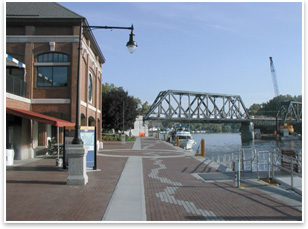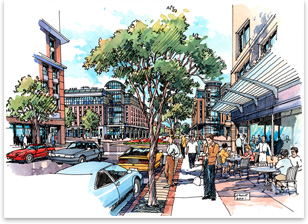
Architects Demonstrate the Value of Community Design Through New Web Site Summary: The new AIA Center for Communities by Design Web resource demonstrates the expertise architects contribute to community design and promotes the value architects bring to our nation’s cities. This first group of eight award-winning projects resulted in:
Intense citizen involvement through public meetings, charrettes, and stakeholder interviews informed all of the plans. The Communities by Design Built Works projects have changed the economic, environmental, and physical landscapes of all of the communities featured here. Based on the AIA Communities by Design 10 Principles for Livable Communities, Built Works contributors discuss the projects goals and plan implementation process and community impact of their recommendations while sharing the community lessons learned. The Web site will continue to feature and promote projects led by AIA architects that incorporate these principles, have significant citizen involvement, and show a measurable impact on the communities involved. Current Communities by Design Built Works include:
|
||
Copyright 2006 The American Institute of Architects. All rights reserved. Home Page |
||
home
news headlines
practice
business
design
recent related
› Communities by Design Built Works: R/UDAT
› AIA Communities by Design Provides Livability Resources
› Philadelphia’s Citizen Architects Plan the City’s
Future
› AIA Launches Green Building Tool Kit for Mayors
› Integrated Design/Integrated Development Conference Selects Four Winning
Green Projects
Visit Communities by Design Built Works: Architects Demonstrate the Value of Community Design for the first group of Built Works projects.
Photos:
1. This bridge in Waterford, N.Y., has been rehabilitated for pedestrian use as part of the New York State Canal Recreation Way Plan. Courtesy of the architect.
2. Architect’s vision for the East Baltimore Comprehensive Physical Redevelopment Plan. Courtesy of the architect.

 New York State Canal Recreation Way Plan
New York State Canal Recreation Way Plan